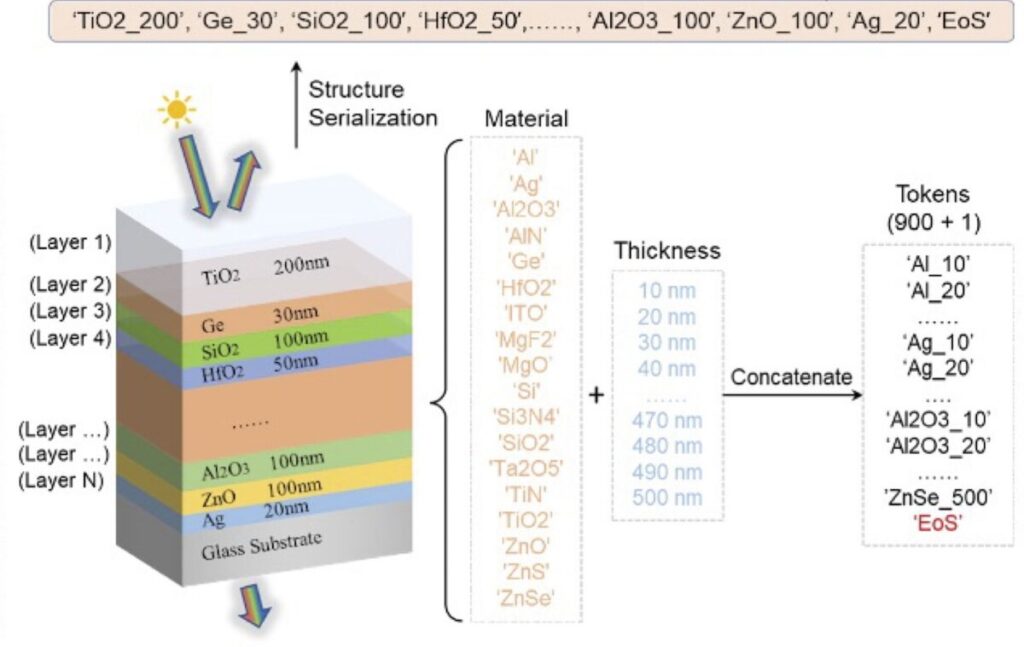OptoGPT is a new algorithm that uses the computer architecture underlying ChatGPT. The makers say it will allow researchers and engineers to design optical multilayer film structures for a wide range of applications, including solar cells.
Engineers at the University of Michigan have developed a new algorithm that can design optical multilayer film structures for applications including solar cells.
OptoGPT (Opto Generative Pretrained Transformer) uses the computer architecture underlying ChatGPT to work backwards from the desired optical properties to the material structure it can provide.
The algorithm produces designs for multilayer film structures, consisting of stacked thin layers of different materials, reportedly within 0.1 second. Well-designed multilayer structures can maximize light absorption in a solar cell, and can also optimize design in other manufacturers of optical components, such as telescopes. According to the makers, OptoGPT designs contain an average of six fewer layers than previous models. This means that the designs are easier to manufacture.
“Designing these structures typically requires extensive training and expertise, because identifying the best combination of materials and the thickness of each layer is not an easy task,” said L. Jay Guo, professor of electrical and computer engineering at the University of Michigan. The model works by treating materials of a certain thickness as words and encoding the corresponding optical properties as input. It looks for correlations between these ‘words’ and predicts that the next word will create a ‘sentence’ that achieves the desired property. “In a sense, we have created artificial sentences to fit the existing model structure,” says Guo.
Guo is the corresponding author of “OptoGPT: a basic model for inverse design in optical multilayer thin-film structures”, a research article recently published in Optoelectronic advances.
The article says that OptoGPT can “effectively deal with the non-trivial inverse design problem in multi-layer structures… Combined with many proposed techniques, our model can unify the inverse design under different types of input targets under different incidence angles/polarizations, be versatile for different types of structures, and facilitate the fabrication process by providing diversity and flexibility.
The researchers acknowledged that although they used a large-scale dataset with 10 million samples for training, the dataset “covers only a small portion of the extensive and complex design space associated with optical multilayer thin-film structures.”
They said that due to the limitations in the training dataset, OptoGPT may not identify designs that fall outside the sampled design space.
“Close collaboration between multiple research groups is needed to obtain a better model for a more general and better photonic inverse design that extends to more complicated structures,” the researchers concluded.
This content is copyrighted and may not be reused. If you would like to collaborate with us and reuse some of our content, please contact: editors@pv-magazine.com.

